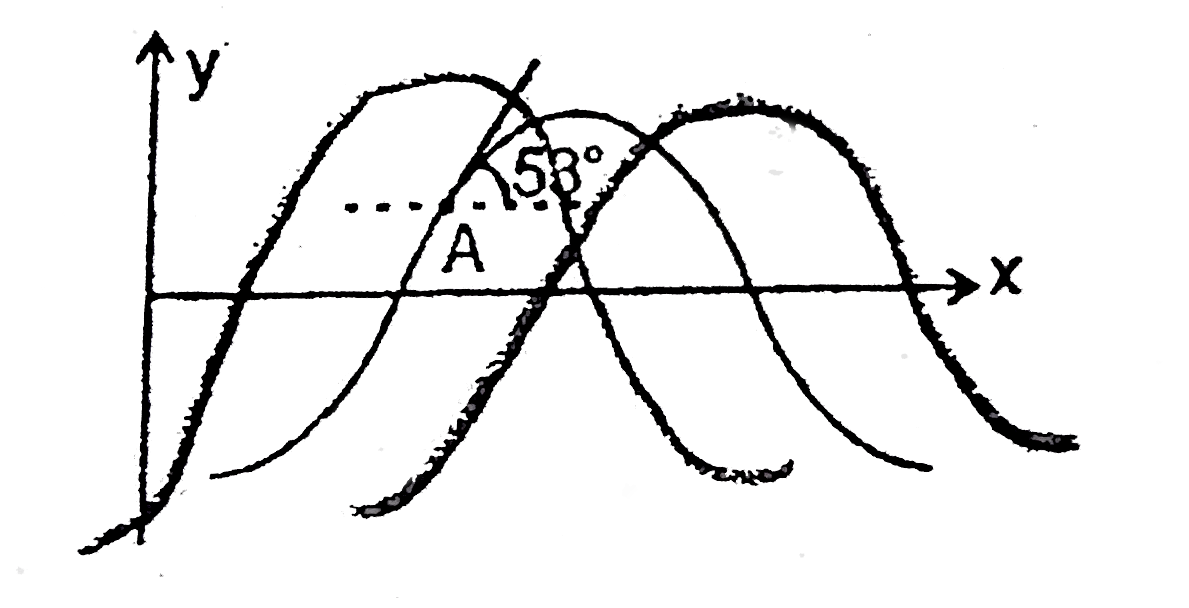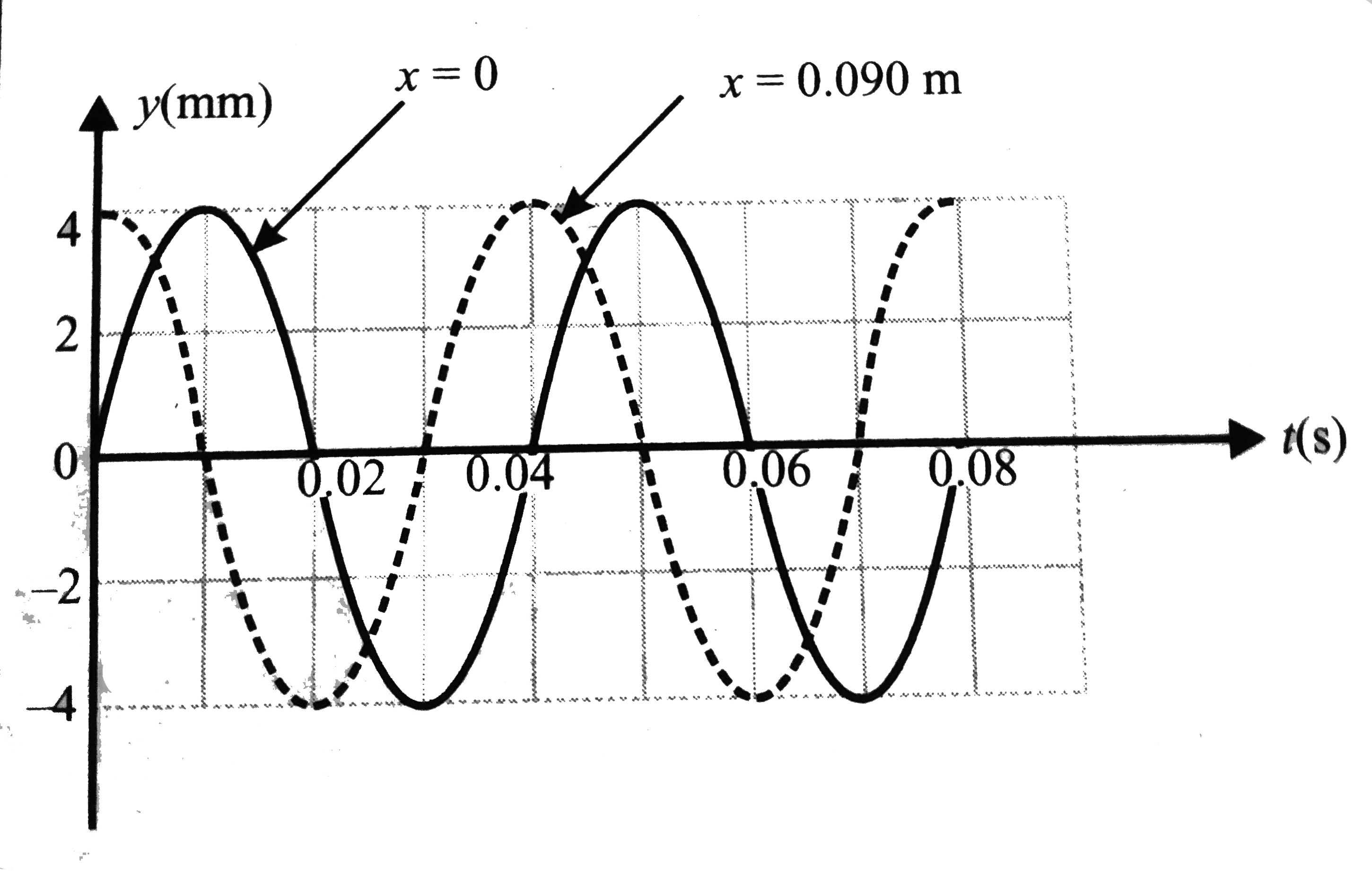A harmonic wave is travelling along +ve x-axis, on a stretched string. If wavelength of the wave gets doubled, then
frequency of wave may change
wave speed may change
both frequency and speed of wave may change
only frequency will change
The correct Answer is:a., b., c.,d.
To solve the problem, we need to analyze how the wavelength of a harmonic wave affects its frequency and speed. Let's break it down step by step.
Step 1: Understand the relationship between wavelength, frequency, and wave speed
The relationship between the wavelength (λ), frequency (f), and wave speed (v) is given by the equation:
v=f⋅λ
Where:
- v is the wave speed,
- f is the frequency,
- λ is the wavelength.
Step 2: Analyze the effect of doubling the wavelength
If the wavelength is doubled, we can express this as:
λ′=2λ
Where λ′ is the new wavelength.
Step 3: Determine the implications on frequency and wave speed
Using the wave speed equation, we can express the new frequency f′ when the wavelength is doubled:
v=f′⋅λ′
Substituting λ′:
v=f′⋅(2λ)
This can be rearranged to find the new frequency:
f′=v2λ
Since v=f⋅λ, we can substitute v into the equation:
f′=f⋅λ2λ=f2
Thus, when the wavelength is doubled, the frequency is halved.
Step 4: Consider the wave speed
The wave speed v depends on the medium through which the wave is traveling. If the medium remains unchanged, the wave speed will remain constant. Therefore, doubling the wavelength does not affect the wave speed if the medium is unchanged.
Step 5: Summarize the findings
1. The wavelength has doubled (λ' = 2λ).
2. The frequency has halved (f' = f/2).
3. The wave speed remains unchanged (v is constant if the medium is unchanged).
Conclusion
Based on the analysis:
- The frequency of the wave may change (it is halved).
- The wave speed may change (it remains constant if the medium is unchanged).
- Both frequency and speed of the wave may change (only frequency changes).
- Only frequency will change (this is correct).
Final Answer
The correct options are:
- Frequency of the wave may change (correct).
- Wave speed may change (not correct if the medium is unchanged).
- Both frequency and speed of the wave may change (not correct).
- Only frequency will change (correct).
The relationship between the wavelength (λ), frequency (f), and wave speed (v) is given by the equation:
v=f⋅λ
Where:
- v is the wave speed,
- f is the frequency,
- λ is the wavelength.
If the wavelength is doubled, we can express this as:
λ′=2λ
Where λ′ is the new wavelength.
Using the wave speed equation, we can express the new frequency f′ when the wavelength is doubled:
v=f′⋅λ′
Substituting λ′:
v=f′⋅(2λ)
This can be rearranged to find the new frequency:
f′=v2λ
Since v=f⋅λ, we can substitute v into the equation:
f′=f⋅λ2λ=f2
Thus, when the wavelength is doubled, the frequency is halved.
The wave speed v depends on the medium through which the wave is traveling. If the medium remains unchanged, the wave speed will remain constant. Therefore, doubling the wavelength does not affect the wave speed if the medium is unchanged.
1. The wavelength has doubled (λ' = 2λ).
2. The frequency has halved (f' = f/2).
3. The wave speed remains unchanged (v is constant if the medium is unchanged).
Based on the analysis:
- The frequency of the wave may change (it is halved).
- The wave speed may change (it remains constant if the medium is unchanged).
- Both frequency and speed of the wave may change (only frequency changes).
- Only frequency will change (this is correct).
The correct options are:
- Frequency of the wave may change (correct).
- Wave speed may change (not correct if the medium is unchanged).
- Both frequency and speed of the wave may change (not correct).
- Only frequency will change (correct).
Topper's Solved these Questions
- TRAVELLING WAVESBOOK - CENGAGE PHYSICS ENGLISHCHAPTER - TRAVELLING WAVESEXERCISE - Assertion-Reasoning
6 Videos
- TRAVELLING WAVESBOOK - CENGAGE PHYSICS ENGLISHCHAPTER - TRAVELLING WAVESEXERCISE - Comprehension
45 Videos
- TRAVELLING WAVESBOOK - CENGAGE PHYSICS ENGLISHCHAPTER - TRAVELLING WAVESEXERCISE - Single Correct Answer
1 Videos
- TRANSMISSION OF HEATBOOK - CENGAGE PHYSICS ENGLISHCHAPTER - TRANSMISSION OF HEATEXERCISE - Single correct
9 Videos
- VECTORSBOOK - CENGAGE PHYSICS ENGLISHCHAPTER - VECTORSEXERCISE - Exercise Multiple Correct
5 Videos
Similar Questions
The figure represents the instantaneous picture of a transverse harmonic wave traveling along the negative x-axis. Choose the correct alternative(s) related to the movement of the nine points shown in the figure.

The points moving downwards is
View SolutionTwo waves are travelling in same direction along a stretched string. The waves are 90∘ out of phase. Each wave has an amplitude of 4.0 cm. Find the amplitude of the resultant wave.
View Solution
Knowledge Check
The speed of transverse wave on a stretched string is
Adirectly proportional to the tension in the stringBdirectly proportional to the square root of the tensionCinversely proportional to liveDinversely proportional to sqyare of tension
y−x curve at an instant for a wave travelling along x−axis on a string is shown. Slope at the point A on the curve, as shown, is tan53∘.

View Solutiony−x curve at an instant for a wave travelling along x−axis on a string is shown. Slope at the point A on the curve, as shown, is tan53∘.

View SolutionConsider a harmonic wave travelling on a string of mass per unit length mu. The wave has a velocity v, amplitude A and frequency if. The power transmitted by a harmonic wave on the string is proportional to (take constant of proportionality as 2π2)
View SolutionA transverse wave is travelling on a string. The equation of the wave
View SolutionA harmonic wave has been set up on a very long string which travels along the length of string. The wave has frequency of 50 Hz. Amplitude 1 cm and wavelength 0.5 m. for the above described wave.
Statement (i): time taken by a point on the string to travel a distance of 8 m along the length of string is 0.32 s.
Statement (ii): time taken by a point in the string to travel a distance of 8m, once the wave has reached at that point and sets it into motion is 0.32 s.
View SolutionLight waves travel in vacuum along the y-axis. Which of the following may represent the wave front?
View SolutionA sinusoidal wave is propagating along a streched string that lies along the x-axis. The displacement of the string as a function of time is graphed in for particles at x-0 and at x=0.0900 m. (a) what is the amplitude of the wave? (b)what is the period of the wave? (c ) you are told that the two points x=0 and x=0.0900 m are within one wavelength of each other. if the wave is moving in the +x-direction, determine the wavelength and the wave speed. (d) if instead the wave is moving in the -x-direction, determine the wavelength and the wave speed. (e) would it be possible to derermine definitely the wavelength in parts (c ) and (d) if you were not told that the two points were within one wavelength of each other? why ot why not?

View Solution
